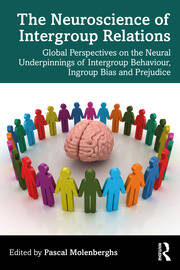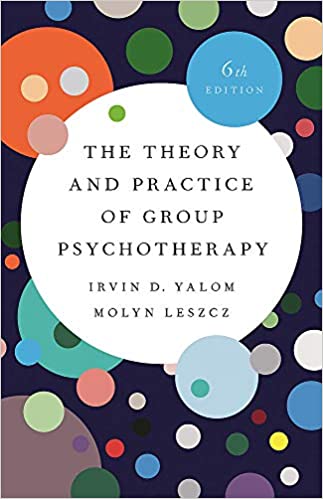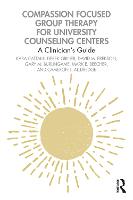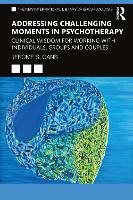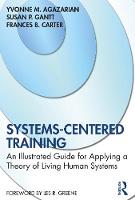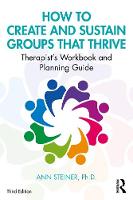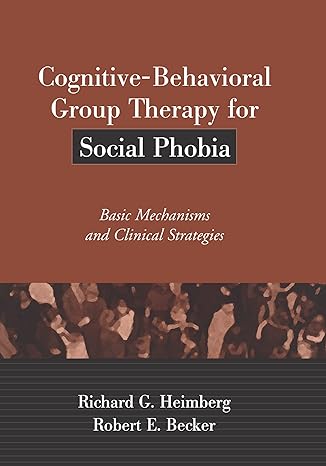Group Psychotherapy Books
The Ethics of Group Psychotherapy: Principles and Practical Strategies
The Ethics of Group Psychotherapy provides group psychotherapists with the ethical and legal foundation needed to engage in effective decision-making in their everyday group practices.
This text... (more)
Psycho-social Explorations of Trauma, Exclusion and Violence: Un-housed Minds and Inhospitable Environments
The central theme of this book is the operation of intersecting discourses of power, privilege and positioning as they are revealed in fraught encounters between in-groups and out-groups in our... (more)
Focused Group Analytic Psychotherapy: An Integration of Clinical Experience and Research
This practical text lays out a new form of focused, time-limited group analytic psychotherapy, built on new and existing research, and integrating clinical experience from across the field. ... (more)
An Introduction to Psychotherapeutic Playback Theater: Hall of Mirrors on Stage
An Introduction to Psychotherapeutic Playback Theater is a comprehensive book presenting Psychotherapeutic Playback Theater as a unique form of group psychotherapy.
This pioneering book is the... (more)
Group Art Therapy: Practice and Research
Group Art Therapy: Practice and Research is the first textbook of its kind, taking into account practice-based evidence and using a transtheoretical approach to present a range of art therapy group... (more)
Group Therapy in Transactional Analysis: Theory through Practice
Tangolo and Massi offer a complete manual for transactional analysis (TA)-based group therapy. Group Therapy in Transactional Analysis demonstrates the evolution of TA as a relational psychodynamic... (more)
The Neuroscience of Intergroup Relations: Global Perspectives on the Neural Underpinnings of Intergroup Behaviour, Ingroup Bias and Prejudice
This path-breaking book is the first collection to provide a scientific global overview on the social neuroscience of intergroup relations, and the neural mechanisms that drive processes such as... (more)
The Theory and Practice of Group Psychotherapy: Sixth Edition
Hailed by Jerome Frank as "the best book that exists on the subject," Irvin D. Yalom and Molyn Leszcz's The Theory and Practice of Group Psychotherapy has been the standard text in the field for... (more)
Women, Intersectionality, and Power in Group Psychotherapy Leadership
This ground-breaking book presents multifaceted perspectives to examine assumptions about gender, intersecting identities, and power that impact women's experience as group psychotherapy leaders,... (more)
Psychoanalysis, Group Analysis and Beyond: Towards a New Paradigm of the Human Being
Psychoanalysis, Group Analysis and Beyond presents an important new paradigm in psychoanalysis and group analysis, presenting the individual and the group as elements of a wider whole and taking... (more)
Group Relations and Other Meditations: Psychoanalytic Explorations on the Uncertainties of Experiential Learning
This book examines the Tavistock tradition of using group relations conferences as temporary training organizations for groups and institutions, and how those can inform and enrich the theory and... (more)
Compassion Focused Group Therapy for University Counseling Centers: A Clinician’s Guide
Compassion focused therapy (CFT) articulates an approach that faces suffering head-on to understand, alleviate, and prevent suffering in ourselves and in others. Compassion Focused Group Therapy for... (more)
Addressing Challenging Moments in Psychotherapy: Clinical Wisdom for Working with Individuals, Groups and Couples
This practical and helpful volume details how clinicians can work through various and common challenges in individual, couple or group psychotherapy.
Chapters draw upon clinical wisdom gleaned... (more)
Present-Centered Group Therapy for PTSD: Embracing Today
Present-Centered Group Therapy for PTSD integrates theory, research, and practical perspectives on the manifestations of trauma, to provide an accessible, evidence-informed group treatment that... (more)
Richard M. Billow's Selected Papers on Psychoanalysis and Group Process: Changing Our Minds
This comprehensive volume presents Richard M. Billow's unique contributions to the theory and technique of psychotherapy, along with summaries and explications by the volume's editor, Tzachi... (more)
The Portuguese School of Group Analysis: Towards a Unified and Integrated Approach to Theory Research and Clinical Work
At the time group analysis was emerging in the United Kingdom through the ideas of S. H. Foulkes, one of his followers, Eduardo Luis Cortesao, returned to Portugal and founded the Portuguese Society... (more)
Systems-Centered Training: An Illustrated Guide for Applying a Theory of Living Human Systems
This illustrated book shows how "thinking" systems offer new ways of seeing people which can help us see and do things differently. The authors describe how a theory of living human systems was... (more)
Integrating CBT with Experiential Theory and Practice: A Group Therapy Workbook
This workbook elucidates the techniques clinicians will encounter using the Cognitive Experiential (psychodrama) Group Therapy (CEGT) model.
This model incorporates cognitive behavioral and... (more)
Making Relational Care Work for Older People: Exploring Innovation and Best Practice in Everyday Life
This book explores the concept of relational care, what it feels like for older people and for carers, why it makes life happier and how those involved in residential or community care can make it... (more)
Why Group Therapy Works and How to Do It: A Guide for Health and Social Care Professionals
This book describes how group treatment offers a unique opportunity for group members to learn and to change as they interact with other group members.
The group structure presents a social... (more)
Integrative Group Therapy for Psychosis: An Evidence-Based Approach
Stemming from a series of outcome and process studies, this book presents an evidence-based, integrative group therapy treatment model that includes elements from psychodynamic, interpersonal,... (more)
The Art of Silence and Human Behaviour: Interdisciplinary Perspectives
This book examines the phenomenon of silence in relation to human behaviour from multiple perspectives, drawing on psychological and cultural-philosophical ideas to create new, surprising connections... (more)
Groups in Transactional Analysis, Object Relations, and Family Systems: Studying Ourselves in Collective Life
Groups are arguably an essential and unavoidable part of our human lives-whether we are part of families, work teams, therapy groups, organizational systems, social clubs, or larger communities. In... (more)
Examining Social Identities and Diversity Issues in Group Therapy: Knocking at the Boundaries
A unique blend of theory and practice within the world of group psychotherapy, this text discusses diversity issues in group contexts within the realm of teaching, consulting, and facilitating... (more)
How to Create and Sustain Groups that Thrive
How to Create and Sustain Groups That Thrive is an accessible manual for group leaders of all kinds, from psychotherapy groups to discussion groups.
This thoroughly updated third edition of the... (more)
The Social Engagement of Social Science: A Tavistock Anthology - Volume II: The Socio-Technical Perspective
The second of a three-volume set comprising of papers by current or former members of the Tavistock Institute of Human Relations.
Theory and Research on Human Emotions: Advances in Group Processes: Vol.21
Aiming to provide a review of work on emotional dynamics in human groupings, the papers in this volume represent approaches to the analysis of emotions. The goal of the volume is to sample the range... (more)








